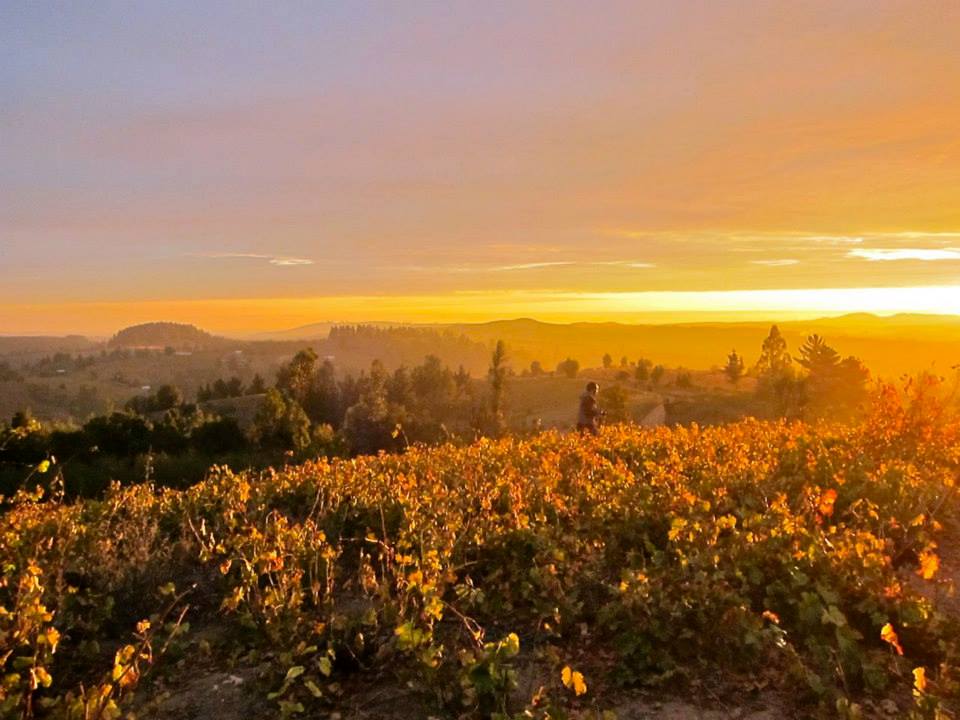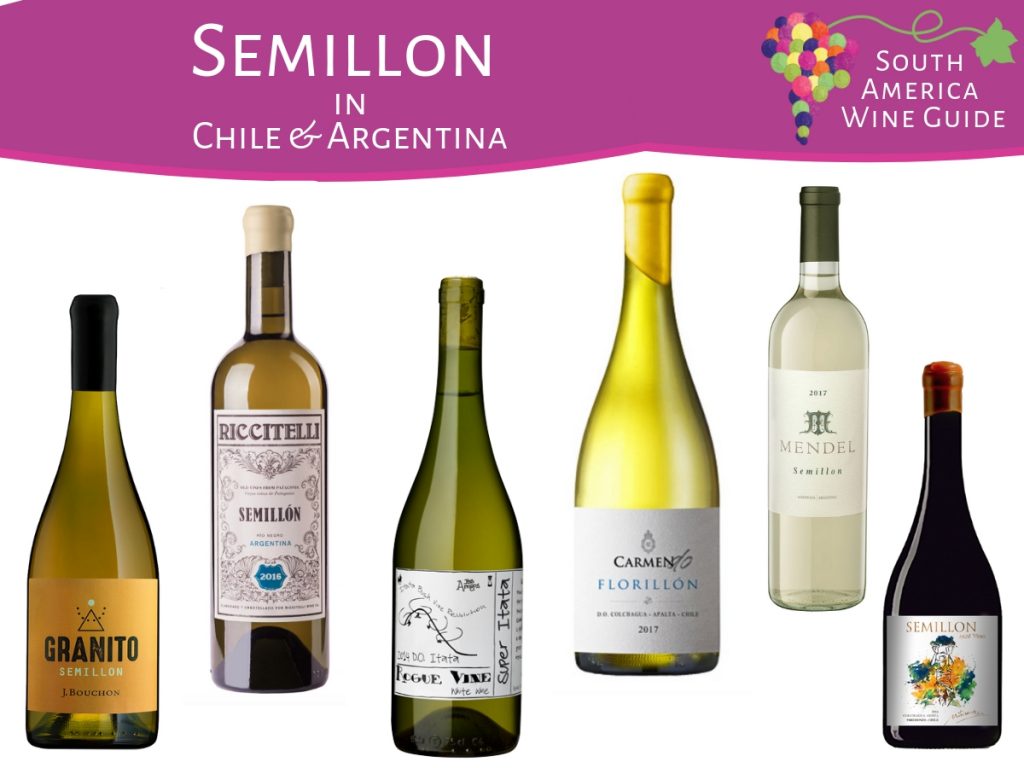With racy, complex and distinct white wines coming from both Chile and Argentina, Semillon is one of the most exciting white wine categories in South America today. Winemakers are putting a focus on making South American Semillon a cornerstone of their vinous identity, but its promising future is quite a different story to its long and widespread history.
The history of Semillon wines in the southern cone
The history of this noble French variety, of course, starts in Bordeaux, where the variety originates, and both dry styles and also the lusciously sweet noble rot wines (of Sauternes and neighbouring regions) are made. French Semillon still dominates global production (claiming almost three-quarters of the world’s production) but New World wine regions in Australia, South Africa and the US also make up some impressive numbers. In South America too, Semillon plantings are numerous however there are far fewer than there were half a century ago.
Arriving in the late 19th century to South American shores, Semillon was planted with gusto in by Francophile wine producers in Chile and Argentina during the mid-20th century. This was the period in which producers were intent on emulating Bordeaux and plantings of other Bordeaux varieties were on the rise as well.
Semillon in Chile
By the 1950s, Semillon made up almost a third of Chile’s vineyard plantings – totalling over 35,000 hectares. Chilean Semillon was one of the most important wine varieties in the country’s history, contending only with País and Cabernet Sauvignon for a similar hectarage. Its reign as Chile’s most important white wine variety didn’t last though.
Towards the end of the 20th century, a tidal wave of Chilean Sauvignon Blanc washed over the country to become the most planted white variety. While Chilean Sauvignon Blanc may be ubiquitous on the wine shelf, plantings — some 15,000 hectares — are still less than half of Semillon plantings at their peak. It has, however, been a sharp downturn for Semillon in Chile and just 950 hectares of Semillon remain. While that number is nothing to be sniffed at, it is the age of these vines (30+ years old) that is exciting winemakers most.
Semillon in Argentina
It’s a similar, although slightly smaller, story in Argentina. There was a great trend for white wine production in the 1970s and plantations of Semillon swept across the country. Semillon become the second most planted white variety within a few short years. At its peak, there were over 5,500 hectares planted however they were largely used for light, easy-drinking jug wines and blends.
As red wine production boomed (Argentina jumped on the Malbec wagon at the turn of the century), Semillon was replaced by other varieties. Today just 750 hectares remain, although – as in Chile – these vines are usually old, with salivating stories to tell.
The Semillon revolution in Chile and Argentina
The statistics might lead you to believe that Chilean Semillon and Argentine Semillon are a downward trend, but I feel it is quite the opposite phenomena occurring today. Whereas historically Semillon was used for cheaper table wines and blends, today’s Semillon wines are strictly premium – and offer some of the most exciting white wines on the continent.
As a variety that retains a punchy acidity, it does well in the sunny climates of Argentina and Chile (where acids in other white varieties drop all too easily in a heatwave). While freshness is almost a given with good vineyard management and attentive harvest timing, what’s compelling about the old vine Semillon coming from Chile and Argentina is the fullness and weight on the palate. The other champion white wines of South America, Torrontés in Argentina and Sauvignon Blanc in Chile, are usually wonderfully aromatic but can be a bit inconsequential in the finish. Whereas the Semillon wines being made could even be seen as the opposite – the focus is much more about the mouthfeel.
The problem Semillon had during its wide dispersion across Chile and Argentina in the 50s and 70s is that it was ahead of its time. White wines weren’t a forte for winemakers in Chile or Argentina in this period and the wines often ended up oxidised, flabby and over-mature. White winemaking in South America is a different story today.
Winemaking technology and expertise have enabled winemakers to make quality Semillon wines that retain their vibrancy and freshness. And, more importantly in my view, there’s a winemaking sensitivity that is driving the Semillon revolution. Rather than making squeaky clean, simple white wines, the tendency is towards fuller, more complex wines that display the character of old vine Semillon.
There’s a tendency towards using longer skin contact, neutral oak barrels and native ferments for Semillon wines in Chile and Argentina. This lends them further to more intricate expressions, and that’s what makes South American Semillon great food wines – or thinking wines. Wines you could even have after dinner, rather than before.
Finally, it seems, the time is right for Semillon in South America.
Semillon wines to try from South America
Top Chilean Semillon wines & producers to try
- Florillón & Quejada 1, Carmen (Colchagua)
- Granito & Las Mercedes, Bouchon Family Wines (Maule)
- Vinos Frios del Ano, JA Jofre (Curicó)
- Trisquel, Aresti (Curicó)
- Rogue Vine (blend, Itata)
- El Perla, Bisogno (Maule)
- Semillon 1928, Maturana (Colchagua)
- Molino del Ciego, Roberto Henriquez (Itata)
- Cuarteles Experimentales, Santa Carolina (Colchagua)
- Secano, Mora Reyes (Itata)
Read tasting notes on the Semillon sessions.
Argentine Semillon wines & producers to try
- Mendel (Mendoza)
- Matias Riccitelli (Río Negro)
- Nieto Senetiner (Mendoza)
- Marcelo Pelleriti Wines (Mendoza)
- Lagarde (Mendoza)
- Finca Suarez (Mendoza)
- Lui (Mendoza)
- Ricardo Santos (Mendoza)
- Via Revolucionaria / Passionate Wines (Mendoza)
- Finca La Anita (Mendoza)
- El Relator, sparkling (Mendoza)
- Marcelo Miras (Río Negro)
- Humberto Canale (Río Negro)
PS. A note to any grammarphiles out there: Semillon is often written without an accent in the southern cone and internationally. In France the accent is above the e (Sémillon), a spelling sometimes adopted in Chile. In Argentina, the accent is more commonly placed over the o (Semillón). I’ve adopted the accent-less spelling. Please don’t take offence.
Main image taken by Kendall Johnson of Rogue Vine winemaker Leo Erazo among old vines in Itata.

